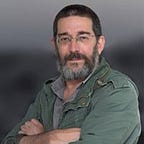a passion for flying things
Six years as executive editor, writer and photographer for an aviation magazine in Portugal and one more year at another publication gave me the chance to photograph a passion I’ve since my younger days: airplanes. It may sound odd, but Portuguese amateur and professional photographers in general only discovered aerobatics flying when the Red Bull Air Races appeared in Portugal, at the end of last decade. But the art of flying has been in Portugal far longer, in small aviation meetings and shows that I had the chance to photograph, regular and professionally, for a long period, between 2002 and 2008. Spotting planes started for me while I lived in Denmark from 1974 to 1977. My Danish girl friend‘s father was a keen spotter and photographer and I went with him, sometimes, to Kastrup, with a air band radio, a camera and lots of patience.
working up in the sky
Photographing aircraft is, many times, more than taking pictures of airplanes and helicopters at airshows or close to airports, something spotters do regularly. Aircraft are also used in multiple tasks, some quite dangerous, and photographing them offers unique images that will extend one’s passion for aviation to new horizons. In some cases the pictures even become more than documents, offering some unique visual angles that make for singular photos added to a collection.
flying & static aircraft
Museums are a great place to see and photograph airplanes, but being able to fly in some aircraft opens for a completely different point of view and experience for any photographer interested in the theme. The cockpit of a big commercial plane is also a special place to be, but even a training simulator for commercial crews can be a visual experience, opening new exploration paths.
spotting: more than snapshots
Although for many plane spotters the simple photographs of planes landing or departing are enough material to satisfy their interest, some take their photography to a new level, and explore creative paths that allow for the creation of series of photographs that tell multiple stories about their passion for this specific branch of photography. Regular spotters at some airports learn to know the light, the best hours of the day and the best angles to capture unique photographs of commercial aviation.
smoke trails for movement
Get The Trails! The only time you can get planes as small spots is… when you also get their trails behind them. Trails are a fantastic element of composition, and many photographers seem to forget how important they are to convey movement. While trails are not always associated with the movement of aircraft, they’re the signature of many aerobatic displays. See the image of helicopters above the sandy beach? Without the trails it would make no sense. As it is, it’s one of my mostly cherished photos. And it’s so simple, everything was in place. I just had to SEE.
panning and propellers
A static propeller in an airplane is, believe me, a bad sign. Do Not Freeze Propellers! And remember that although planes travel at a great speed, you don’t need to use the fastest shutter in your camera to stop them. Well, you can with jets but it does not work well with planes with propellers. So, do remember to lower your speed (it can vary, between 1/125 and 1/500) to get a sharp image that just shows a slight blur on the moving parts. Panning with the aircraft is also a way to show movement, and it works fine… once you get the hang of it.
knowing what to use
A DSLR is probably the best choice for photographing fast moving planes. A long lens helps too, starting at 300mm. Longer lenses are also good to compress backgrounds and give you a clear separation between front and back elements. I use a 100–400 mm (in fact a 640 mm crop on an APS-C body) to do many things, from paintings on the fuselage to whole airplanes. A wiude-angle makes for a good companion, allowing you to get images like the large one under. Wide-angles are great to get the general feeling of the place. With a wide-angle and a long lens you can cover almost anything during a air show.
I am a loner
I am a loner, mostly, when photographing airplanes. I believe that we’ve to feel what we do and I can only get into that state of mind when all my senses are turned into one direction. That’s how I envisage photography. It’s a contemplative moment for me, especially when I am shooting things I am really interested into. Then it’s not just work, it’s passion.And this also applies if I am up there photographing air-to-air. Although it is a cooperative effort between the pilots in the planes and the photographer, once we get things rolling I need to have eyes on one thing only: the plane I am photographing.
Footnotes: If you want to learn to photograph planes with me contact for a lesson. Even if there are no airshows available we might find ways to explore the theme.
